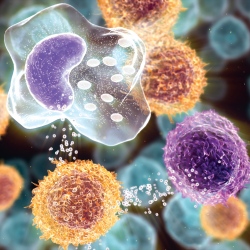
An international team of researchers has used a combination of genomic and gene expression analyses to identify 10 subtypes of breast cancer, each of which is typified by certain genetic aberrations. The classification of cancers can help researchers and doctors better understand patients’ responses to different therapeutics as well as prioritize drug design efforts for the most deadly of molecular disruptions.
The largely Canadian and UK team studied nearly 2000 breast tumor specimens from patients whose medical conditions were tracked for as many as 20 years after the specimens were taken. The researchers analyzed the genome sequences and gene expression levels of the tumors using DNA hybridization technology to examine changes in chromosomal architecture known as “copy number aberrations.” Breast cancer exhibits many of these structural changes–abnormal repetitions of chunks of chromosomes that can greatly alter the molecular landscape of a cell.
The researchers also identified molecular changes within some of the subtypes that could one day help doctors decide how to best treat an individual’s particular tumor type. Some clinics are already using DNA analysis to “personalize” cancer treatments and studies like this can focus doctors and drug companies on the most effective molecular targets for treatment or R&D.
The team is currently sequencing the genomes of some of the specimens, says Samuel Aparicio, a physician and cancer geneticist the British Columbia Cancer Research Centre in Vancouver. “We need the full mutational framework for breast cancers,” he says, referring to the more complete picture that whole-genome sequencing will provide. What the team learned in this study could help “shortcut some of the framework building by directing our attention to specific groups,” he says.
